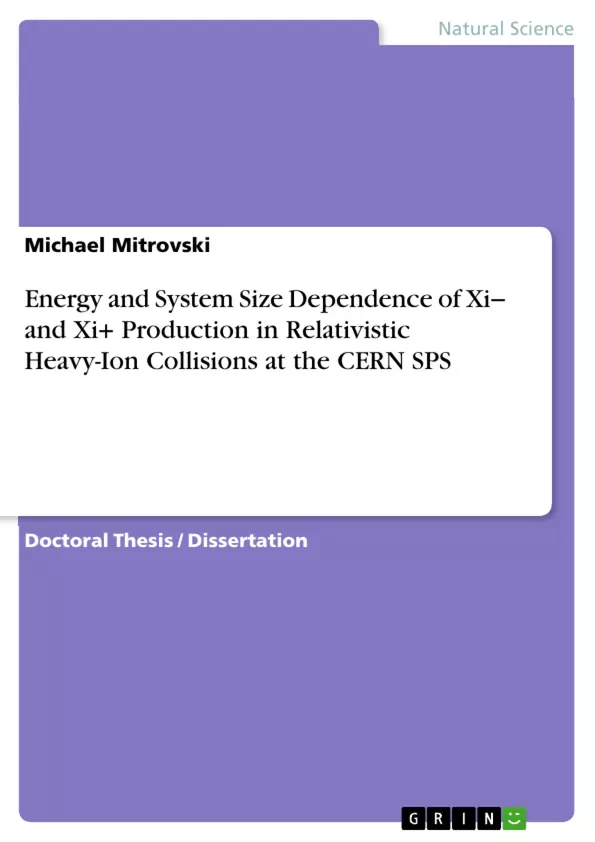Quarks sind die elementaren Bestandteile, aus denen Hadronen (Baryonen und Mesonen) aufgebaut sind. Zusammen mit den Leptonen und den Eichbosonen gelten sie heute als die fundamentalen Bausteine, aus denen alle Materie aufgebaut ist. Im Standardmodell der Teilchenphysik werden diese Ergebnisse zusammengefasst. Es gibt sechs verschiedene Quark-Arten (flavours): up, down, strange, charm, bottom und top. In der Natur kommen keine isolierten Quarks vor, sondern nur Kombinationen aus z.B. einem Quark-Antiquark Paar (Meson) oder aus drei Quarks (Baryon). Die Quantenchromodynamik (QCD) beschreibt die starke Wechselwirkung zwischen Quarks und Gluonen. Quarks bauen unter anderem Protonen und Neutronen auf. Gluonen vermitteln die Wechselwirkung zwischen den Quarks. Konzeptionell ist die QCD an die Quantenelektrodynamik (QED) angelehnt, die die Wechselwirkung elektrisch geladener Teilchen (z.B. Elektron oder Positron) durch den Austausch von Photonen beschreibt. Analog wirkt die Kraft, die durch den Austausch von Gluonen beschrieben wird, zwischen Teilchen, die eine Farbladung (rot, grün, blau) tragen. Im Vergleich zur QED, wo das Photon neutral ist, trägt das Gluon selbst Farbe und wechselwirkt daher mit anderen Gluonen. Bei kleinen Quarkabständen und hohen Energien bzw. hohen Impulsüberträgen, fällt die Kopplungskonstante der starken Wechselwirkung (αs) ab. Bei kleinem αs sind Quarks und Gluonen schwach gebunden (Asymptotische Freiheit). Bei grossen Abständen bzw. kleinen Impulsüberträgen ist αs gross. Die Zunahme von αs bewirkt, dass unendlich viel Energie benötigt wird, um Quarks aus Hadronen herauszulösen. Dies hat die Folge, dass es günstiger ist ein neues Quark-Antiquark Paar zu erzeugen. Das erklärt, warum Quarks immer in Hadronen (Mesonen und Baryonen) gebunden sind und nie isoliert beobachtet werden können (Confinement).Wenn Kernmaterie stark komprimiert wird, steigen Energiedichte und Temperatur, und möglicherweise erfährt die Kernmaterie einen Phasenübergang zu einem Zustand der als Quark Gluon Plasma (QGP) bezeichnet wird. Das QGP ist ein Zustand der Materie, in dem das Confinement der Quarks und Gluonen aufgehoben ist (Deconfinement). Dieser Zustand ist gekennzeichnet durch ein quasi-freies Verhalten der Quarks und Gluonen. Quarks und Gluonen in Hadronen ein. Im heutigen Universum existiert das QGP höchstens noch im Zentrum von Neutronensternen und explodierenden schwarzen Löchern.
Inhaltsverzeichnis (Table of Contents)
- Zusammenfassung
- Einleitung
- Theoretischer Hintergrund
- Experimentelle Methoden
- Ergebnisse und Diskussion
- Zusammenfassung und Ausblick
Zielsetzung und Themenschwerpunkte (Objectives and Key Themes)
This dissertation explores the dependence of E- and E+ production in relativistic heavy-ion collisions at the CERN SPS on energy and system size. The study aims to shed light on the properties of the strongly interacting matter created in such collisions, particularly the transition to a deconfined state known as the Quark Gluon Plasma (QGP).
- The role of energy and system size in the production of E- and E+ in heavy-ion collisions.
- The properties of the Quark Gluon Plasma (QGP) and its formation in heavy-ion collisions.
- The application of theoretical models to interpret experimental data and understand the underlying physics.
- The comparison of experimental results with theoretical predictions to test our understanding of the strong interaction.
- The implications of the findings for our understanding of the early universe and the evolution of matter.
Zusammenfassung der Kapitel (Chapter Summaries)
- Zusammenfassung: Provides a brief overview of the dissertation, outlining the main objectives, key themes, and findings.
- Einleitung: Introduces the field of relativistic heavy-ion collisions and the importance of studying the production of E- and E+ in these collisions. It also highlights the theoretical framework and experimental methods used in the dissertation.
- Theoretischer Hintergrund: Discusses the theoretical foundations of the strong interaction, including Quantum Chromodynamics (QCD) and the concept of the Quark Gluon Plasma (QGP). It also describes the theoretical models used to predict E- and E+ production in heavy-ion collisions.
- Experimentelle Methoden: Explains the experimental setup and methods used to measure E- and E+ production in heavy-ion collisions at the CERN SPS. It also discusses the data analysis techniques employed.
- Ergebnisse und Diskussion: Presents the experimental results obtained in the dissertation, including the energy and system size dependence of E- and E+ production. The results are discussed in the context of theoretical predictions and existing knowledge about the strong interaction.
Schlüsselwörter (Keywords)
Relativistic heavy-ion collisions, Quark Gluon Plasma, E- and E+ production, energy dependence, system size dependence, Quantum Chromodynamics, theoretical models, experimental measurements, data analysis, CERN SPS.
- Arbeit zitieren
- Michael Mitrovski (Autor:in), 2007, Energy and System Size Dependence of Xi− and Xi+ Production in Relativistic Heavy-Ion Collisions at the CERN SPS, München, GRIN Verlag, https://www.hausarbeiten.de/document/287093


